The DxOMark overall Mobile score of 88 points comprises separate Photo and Video sub-scores. Thanks to its excellent still photography performance in all lighting conditions, the Samsung Galaxy S8 achieves a Photo sub-score of 88 points, just one point behind the top Photo score of 89 for Google’s Pixel smartphone.
For still photography, the Samsung Galaxy S8 has three main strengths: excellent autofocus, accurate white balance, and very effective noise reduction.
It’s one of the best devices we’ve tested for autofocus, with smooth, fast ,and accurate performance in all lighting conditions. Shooting outdoors, white balance is very good, recording virtually no colorcasts or errors during our tests. The Samsung Galaxy S8 also records very low levels of noise in almost all lighting conditions, which should be appealing to photographers looking to record portraits with smooth skin tones. The Samsung Galaxy S8’s main weakness for stills is linked to its low noise, however, as its pictures have lower levels of sharpness compared to those of its main competitors.
The Samsung Galaxy S8’s Video sub-score of 88 points puts the device into joint top place for moving image quality alongside Google’s Pixel, the Samsung Galaxy S7 Edge, and the Sony Xperia X. Video exposures and dynamic range are very good, but the Samsung Galaxy S8’s main strengths for video are its excellent stabilization system (with improved results in low light compared to its predecessor), and its excellent color rendering, with no color shading in bright-light videos.
In contrast to its performance for stills, the main drawback for video image quality on the Samsung Galaxy S8 is noise, which is significantly more visible compared to previous Samsung devices, particularly when shooting in low-light conditions.
Outdoor: Excellent exposure and color
Shooting outdoors or in bright light conditions, exposure is either very good or very acceptable on almost all scenes. In balanced lighting conditions, target exposures are excellent, rendering bright and colorful pictures.
In tricky high-contrast scenes, HDR mode is triggered automatically, resulting in very acceptable exposures and recording detail in both the brighter and darker regions. The S8 provides pretty aggressive dark recovery, which can lead to a slight impression of overexposure. It’s a good strategy though, as the principal exposures remain very acceptable for most users.
Color remains vivid and pleasant in all outdoor exposures, even in those low-contrast regions, and white balance is extremely consistent, recording very few errors.
Indoor: Effective noise reduction
For low-light photography, the Samsung Galaxy S8 employs a slight different image processing strategy than many of its main competitors. While many alternative devices tend to preserve high levels of fine detail, resulting in increased luminance noise, the S8 employs very effective noise reduction for much smoother low-light images. As a result, although generally acceptable detail is preserved, very fine details in hand-held low-light images are often lost. This may be attractive to portrait photographers, however, who desire very smooth skin tones and are prepared to sacrifice a bit of overall detail to achieve it.
Low-light exposures are very good, and even extreme low-light (5 Lux) images remain bright, with clearly-defined details, and the results are very usable. Relatively slow shutter speeds of 1/10 second are employed when shooting under low-light conditions between 5 and 20 Lux, and although the lens’s image stabilization system ensured sharp images of our static laboratory setup shot, it’s worth bearing in mind that any significant subject movement in low-light images can possibly result in blurry pictures. Also keep in mind that with temporal frame stacking, the shutter time provided by exif data is not necessarily an accurate value.
White balance in low-light images is on the whole very good. Under daylight fluorescent lighting, a cooler blue/green cast is evident, shifting to a warmer yellow under tungsten lighting, but colors remain bold and pleasant in both conditions and the colorcasts are acceptable. Some slight color shading is also visible on low-light images, shifting from pink in the center to green on the edges, but again, it’s minor, so not too distracting or concerning.
Video: Improved stabilization
For video enthusiasts, target exposures are very good, especially in bright light, with movies displaying wide dynamic range and good contrast. Exposure adaptation during lighting changes is smooth, albeit a little slow, and a very slight overshoot is visible when transitioning between bright and low-light conditions.
Video stabilization has been significantly improved over the S7. This is especially evident in low-light conditions in both moving shots while walking and when panning. Despite the improvements, a slight judder effect and occasional frame shifts are visible in panning videos, but it’s a minor complaint and generally the stabilization is much improved. The Samsung S7 already had good video stabilization, but an unsightly “jello” effected detract from the quality of some indoor movies; this has been well-corrected on the Galaxy S8.
The Samsung S8 uses a faster shutter speed in low-light videos compared to the S7, aiding the stabilization system for indoor and low-light conditions. This comes at the expense of more noise, however, which is visible in many of the S8’s indoor movies, and despite the extra noise, very fine details are lost in the S8’s low-light movies. In bright light conditions, noise on videos is better controlled, with generally good texture preservation. Video autofocus is fast, smooth, and generally accurate in all lighting conditions. The S8 is also capable of good autofocus tracking on panning videos or during walking movement.
The S8’s color has also been improved with respect to the Samsung S7’s video capabilities, with generally accurate color rendering. On the whole, video white balance is very acceptable, although adaptation under changing lighting conditions can be slow, resulting in a visible change in the color matrix. Video color shading has also been vastly improved, especially in the S8’s bright light videos, and it’s barely visible in low-light videos as well.
Details: Explaining the score
Exposure and Contrast (89)
This is an excellent score for Exposure and Contrast, thanks to the S8’s all-round top performance in all lighting conditions. A few instabilities with HDR activation on consecutive exposures reduced the score a little, with some brighter exposures overexposing highlight details. Slightly flat or lo- contrast rendering of darker regions on HDR exposures would benefit from post-production correction to add more punch, but “as shot” exposures will remain respectable for many smartphone photographers.
Color (85)
The S8 achieved a very good score for color, with nice rendering of vivid and bright colors in all conditions. White balance is generally accurate and very acceptable, particularly in outdoor images, in which only a slight pink colorcast is noticeable only very occasionally. In low light, we observed a cool colorcast in images shot under fluorescent light, shifting to a warmer tone on tungsten images, but again, color remains pleasant and the colorcasts aren’t overly strong.
Flash (87)
The Galaxy S8 achieves a good score for flash, offering fairly good levels of detail preservation in test images shot under all lighting conditions. Noise is also well-controlled in flash exposures, with only a slight luminance noise visible in the outer field.
Under mixed lighting conditions, flash pictures benefit from excellent exposure, good color rendering, and generally accurate white balance. The exceptions are some minor color shading when using flash mixed with tungsten light sources, but it’s only slightly noticeable. In flash pictures without additional lighting, images have good detail preservation, accurate white balance, and good color rendering, but are a little over-exposed; further, the flash is slightly off-center, so images are brighter on the left side of the frame.
Autofocus (93)
The S8’s highest recorded category score was for autofocus, which is fast, smooth, and accurate in all lighting conditions. It recorded a higher variance for autofocus repeatability in Auto mode compared to Trigger mode in both bright and low-light conditions. This means it recorded more consistent sharpness over a series of 30 consecutive shots in trigger mode, but the S8 remains a capable autofocus performer in both modes.
Texture (92)
Noise (92)
The S8 achieved excellent scores for both Texture and Noise, thanks to good all-round detail preservation, especially for high-contrast details, and very effective noise reduction. In bright light, detail is fairly good, if not outstanding, with very fine detail lost in low-contrast areas as a result of the effective noise reduction. The same applies to low-light images in which the strong noise reduction preserves everything except very fine details, resulting in a loss of fine color detail; however this also results in smoother skin tone rendering in portraits.
Artifacts (75)
The S8 had a fairly low score for artifacts, with inconsistent sharpness across the field a big drawback. On both devices we tested, there was a very noticeable loss of sharpness between the center and edges of the frame, which significantly impacts image quality. Some minor ringing along high-contrast edges was also visible on 100% crops, but this isn’t unusual for Smartphone photos, and has a less significant impact on picture quality. A slight cyan shift in blue skies was also visible on some exposures and some luminance shading is also noticeable in low-light images, but the Moiré effect is barely evident on high-frequency details.
Photo Pros
- Very fast and accurate autofocus in all lighting conditions
- Good color rendering in lowlight conditions
- Very good target exposure for all lighting conditions
- Very good shadow detail for high dynamic scenes
- On flash pictures noise is low, with only slight luminance noise
Video Pros
- Fast, smooth and accurate autofocus, in all conditions, with good tracking
- Very effective stabilization
- Good exposure and wide dynamic range
- Good color rendering
- Good noise level in bright light conditions
Photo Cons
- Slight loss of detail in low contrast areas in all lighting conditions
- Strong variations of sharpness visible in the field
- Ringing visible
- Very fine color details are lost in all lighting conditions
- On flash pictures in tungsten light color shading is slightly noticeable
Video Cons
- Visible noise in low light conditions
- Judder effect visible during panning movements
- Frame shift occasionally visible during panning movements


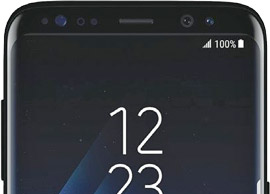



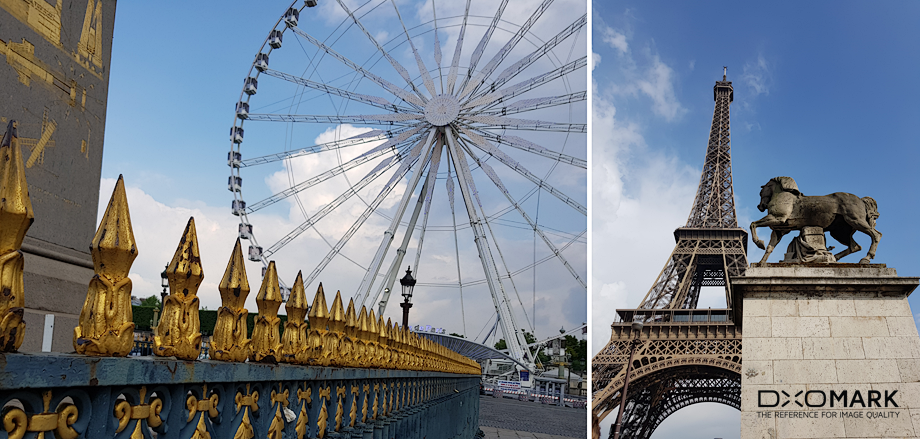



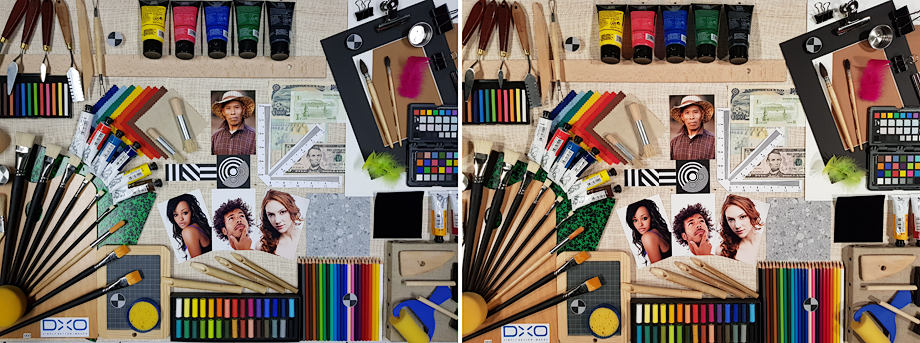

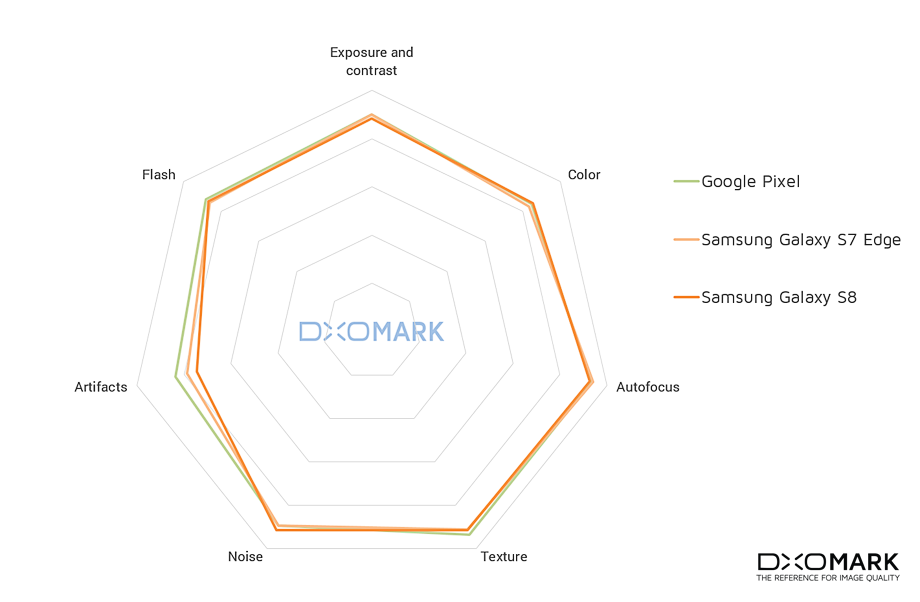
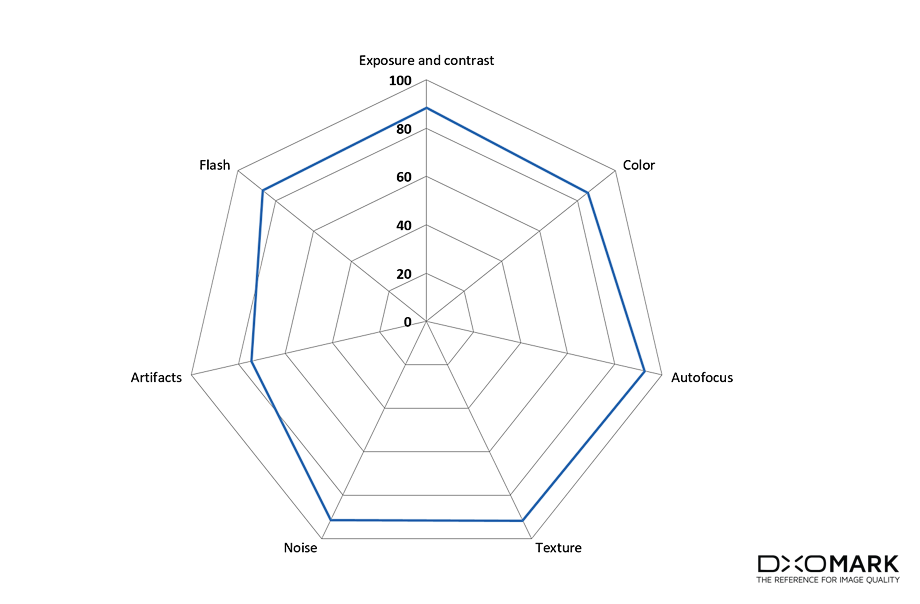
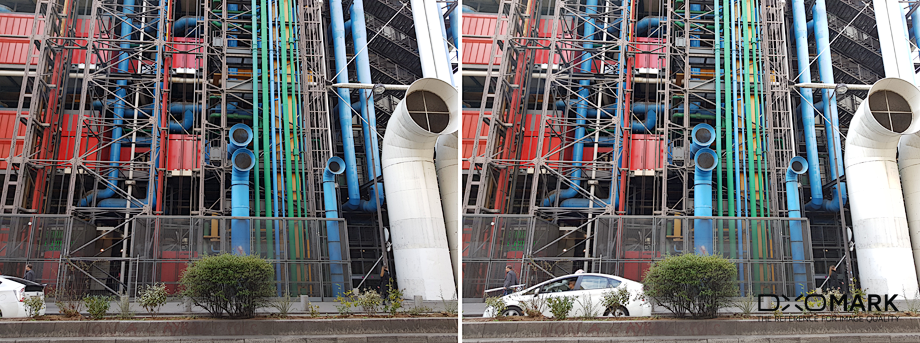
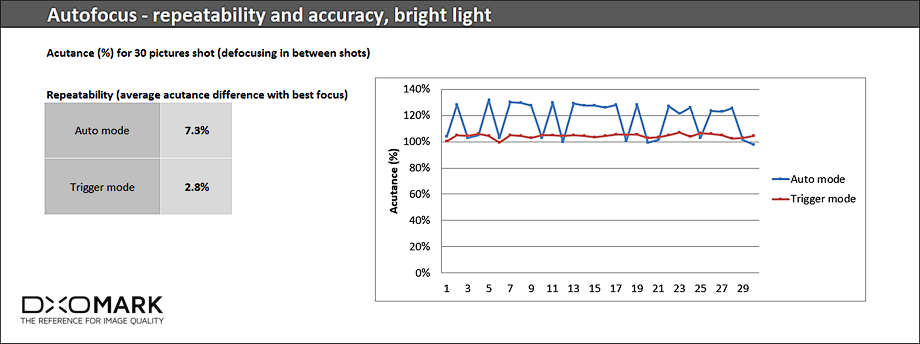

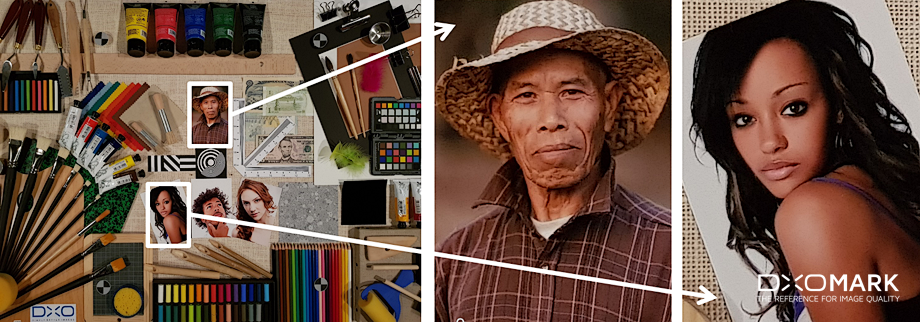

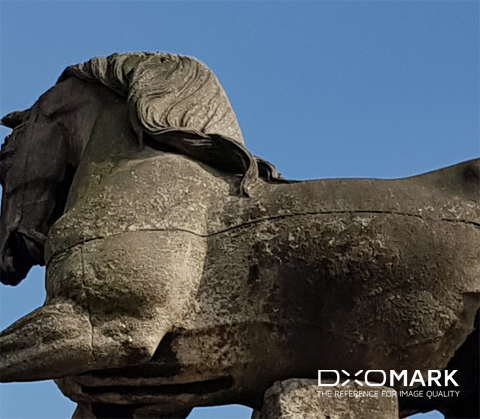
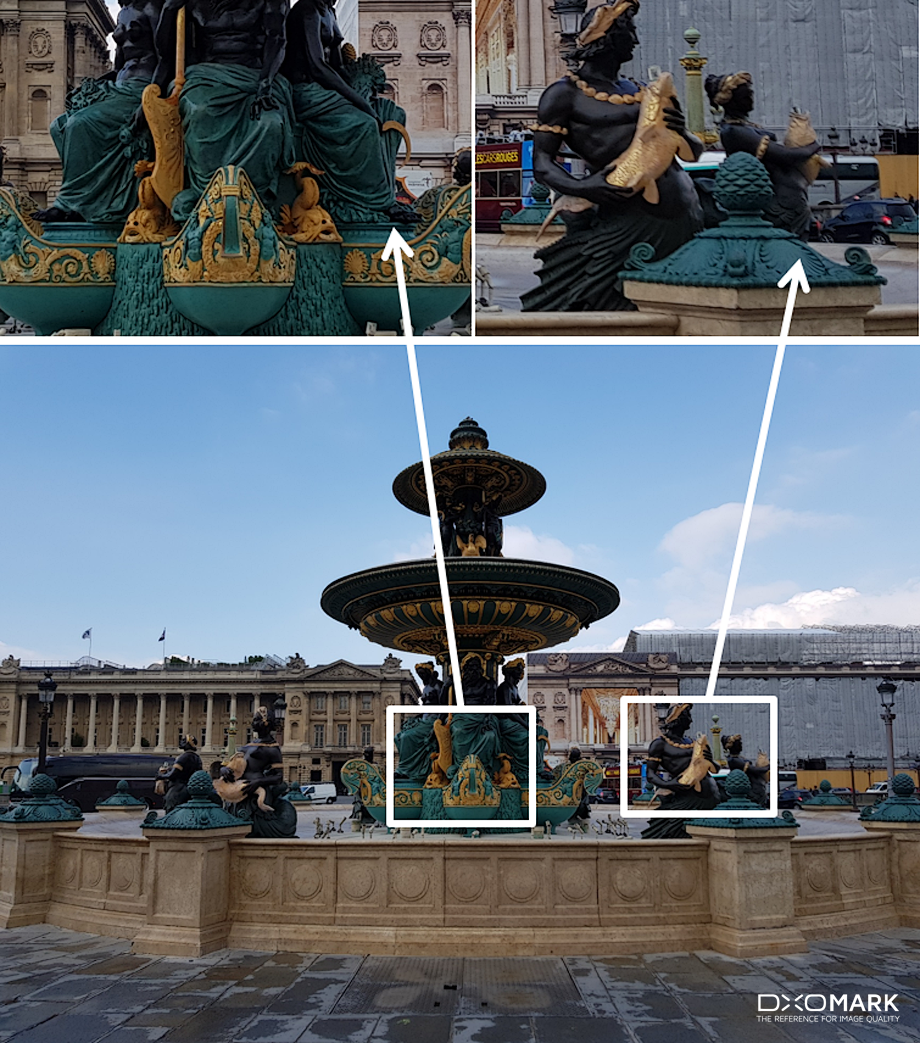
DXOMARK encourages its readers to share comments on the articles. To read or post comments, Disqus cookies are required. Change your Cookies Preferences and read more about our Comment Policy.